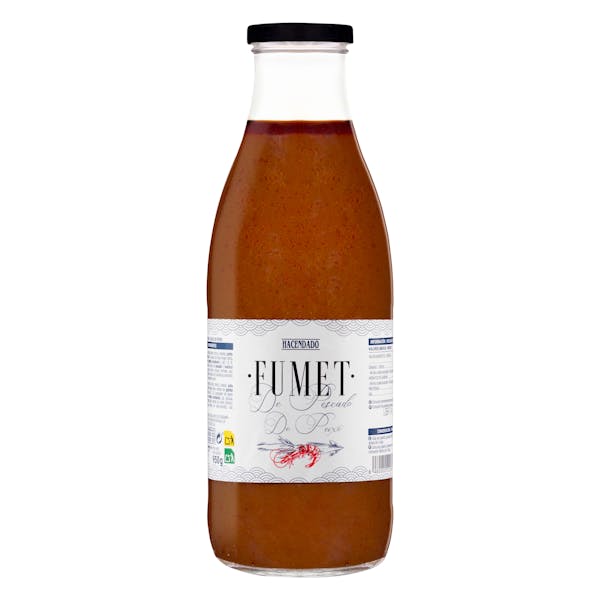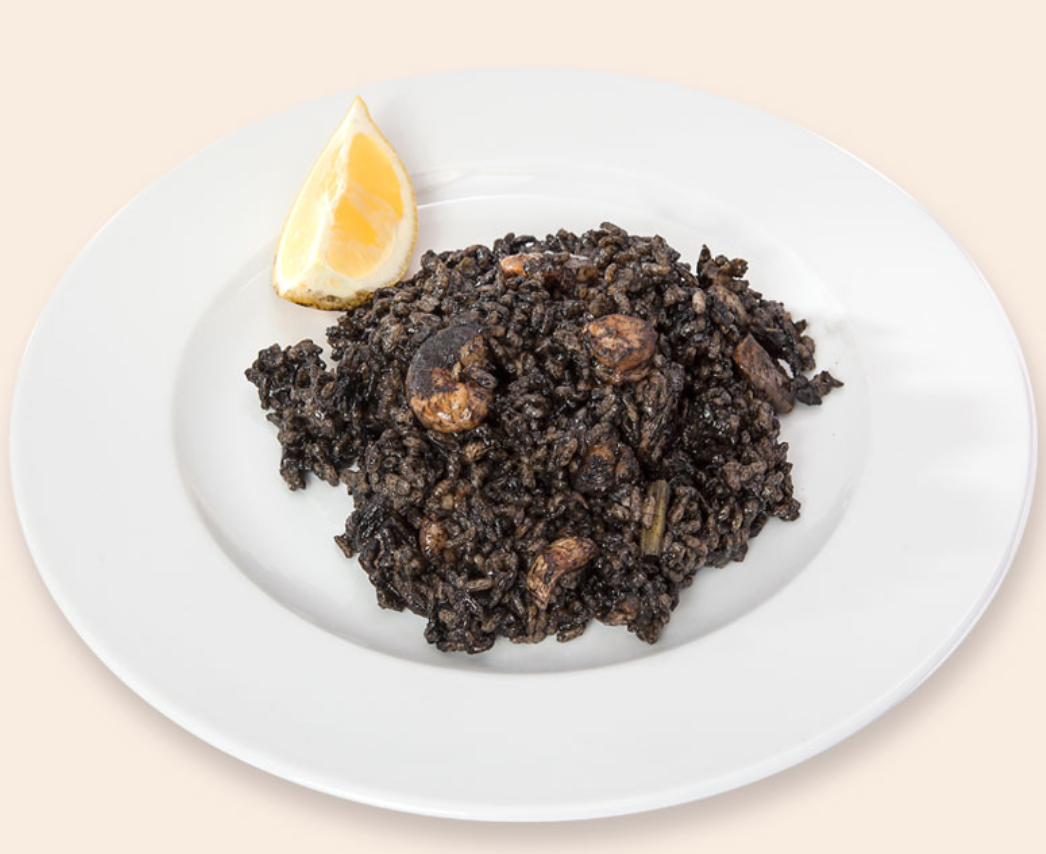Arroz Negro, or "black rice," is a captivating and intensely flavourful dish that hails from the coastal regions of Spain, particularly Valencia. It's a vibrant cousin to paella, distinguished by its striking deep black colour, imparted by squid ink, and its rich taste, derived from a medley of fresh seafood. While it might look intimidating, the process of crafting this culinary masterpiece is incredibly rewarding, culminating in a dish that is both sophisticated and deeply comforting.

At its heart, traditional Arroz Negro celebrates fresh, high-quality ingredients cooked with patience and precision. The key to its depth of flavour lies in a seafood fumet and the careful layering of aromatics and seafood. If you're eager to bring a slice of Spanish culinary heritage to your kitchen, read on for a comprehensive guide to making authentic Arroz Negro, with a special note on adapting the method if you don't possess a traditional paella pan.
The Foundation: A Superior Seafood Fumet
Before you even think about the rice, the first and most crucial step for any authentic Valencian rice dish is a magnificent fumet. This seafood stock is the soul of your Arroz Negro, lending it an incomparable depth of flavour that no store-bought alternative can truly replicate. Don't skimp on this step; it's what elevates the dish from good to truly exceptional. That said, if you don't have time or the patience, you can get a good seafood fumet at Mercadona or from the brand Aneto.


Ingredients for the Seafood Fumet:
300 grams of prawn heads or raw king prawns
500 grams of spines and heads of white fish (such as hake or monkfish)
1 onion
2-3 cloves of garlic
1 leek chopped
2 carrots chopped
2 celery stalks chopped
150 millilitres of white wine (dry white wine is recommended)
150 milliliters of cognac or brandy
Virgin olive oil
Salt
Pepper
A bay leaf
Optional additions for flavour: parsley, saffron, rock fish, or cheaper seafood like mantis shrimp.
Steps for making the Fumet:
1. Add Seafood Elements: Add the fish heads and bones, along with the prawn shells and heads. Stir well and cook for another 5 minutes, allowing them to release their aromas. Squash the heads so they release their juices.
2. Once the seafood is golden brown, add the white wine and increase the heat to evaporate the alcohol.
Add the cognac or brandy and flambé until the flame extinguishes. Exercise caution and avoid turning on the extractor fan during this step.
3. Add the onion, carrots, celery, and garlic. Sauté gently for about 5-7 minutes until softened but not browned. Add the salt, pepper, and bay leaf. Cover the ingredients with water. Cook the broth over medium heat.
4. When the broth begins to boil, remove any scum that forms on the surface to ensure a clear broth. Do not cook for more than 30 minutes, as overcooking can distort the flavour, making it bitter or metallic.
5. Some prefer to finish the fumet by blending it for a thicker, more intense broth - I do this. If you choose to do this, first remove any thick bones, fish, bay leaf, and aromatic herbs to prevent a bitter taste and blend with a hand blender.
6. Carefully strain the fumet through a fine-mesh sieve lined with cheesecloth (if you have it) into a clean pot or bowl. Discard the solids. You should have a clear, fragrant seafood stock. Keep it warm.
The Heart of the Matter: Arroz Negro con Calamares y Gambas

With your glorious fumet ready, you're now poised to create the star of the show. The traditional Valencian method for rice dishes prioritises the 'socarrat' – a delicate, slightly crispy caramelised layer of rice at the bottom of the pan, which is a highly prized textural element.
Ingredients for Arroz Negro (Serves 4-6):
Approx. 400g short-grain rice (Bomba or Calasparra are ideal, but Arborio can be a good substitute if those are unavailable)
2 medium squid, cleaned, tentacles reserved, bodies cut into 1cm rings
250g raw prawns, peeled and deveined (reserve shells for fumet)
2-3 sachets (approx. 8-12g total) squid ink
1 large onion, finely chopped
2 cloves garlic, minced
1 ripe tomato, grated (discard skin)
1/2 red bell pepper, finely diced (optional, but adds colour and sweetness)
A pinch of saffron threads (optional, but enhances colour and flavour)
Approx. 1 litre warm seafood fumet (you might need a little more or less)
Extra virgin olive oil
Salt to taste
Fresh parsley, chopped, for garnish
Lemon wedges for serving
Equipment:
A traditional paella pan (a wide, shallow, two-handled pan) OR
A large, shallow oven-safe pan or baking dish (for the oven method)
Method (Traditional Paella Pan):
Prepare the Sofrito: Heat a generous amount of olive oil in your paella pan over medium heat. Add the chopped onion and bell pepper (if using) and sauté gently until softened and translucent, about 8-10 minutes.
Add Squid: Increase the heat slightly and add the squid rings and tentacles. Cook for 5-7 minutes, stirring occasionally, until they turn opaque and start to release their liquid. The squid will initially release water, which will then evaporate, allowing them to brown slightly.
Incorporate Garlic and Tomato: Add the minced garlic and grated tomato. Cook for another 5 minutes, stirring, until the tomato has reduced and the mixture is fragrant. This is your 'sofrito' – the flavour base.
Bloom the Saffron: If using saffron, lightly toast the threads in a dry pan for a few seconds, then crush them and add to the sofrito.
Add Rice: Pour in the rice and stir well to coat every grain with the sofrito and oil. Toast the rice for 1-2 minutes, stirring constantly. This helps the rice grains absorb flavour and prevents them from becoming too sticky.
Introduce Squid Ink and Fumet: Carefully mix in the squid ink until it's fully incorporated, turning the rice a dramatic black. Pour in about 800ml of the warm fumet. Stir gently to ensure the rice is evenly distributed. Do not stir the rice extensively after this point, as it can release starch and prevent the development of the socarrat.
Simmer and Cook: Bring the liquid to a rolling boil, then reduce the heat to medium-high. Let the rice simmer uncovered for about 10-12 minutes, allowing the liquid to reduce and the rice to cook. You'll see bubbles forming evenly across the surface.
Add Prawns: Once most of the liquid has been absorbed but the rice is still a bit soupy on top, artfully arrange the raw prawns on top of the rice. They will cook through with the remaining heat.
The Socarrat Stage: Continue to cook for another 5-8 minutes. Listen for a gentle crackling sound, which indicates the formation of the socarrat. You can gently test the bottom with a spoon to ensure a thin, crispy layer has formed. Be careful not to burn it!
Rest: Once cooked, remove the paella pan from the heat. Cover loosely with foil or a clean kitchen towel and let it rest for 5-10 minutes. This allows the flavours to meld and the rice to finish cooking through steam.
Serve: Garnish with fresh parsley and serve immediately with lemon wedges on the side. A dollop of aioli (garlic mayonnaise) is also a classic accompaniment.
The Oven-Cooked Method: No Paella Pan? No Problem!
If you don't have a traditional paella pan, fear not! You can still achieve a fantastic Arroz Negro using an oven-safe pan or baking dish. While the socarrat might be slightly different, the flavour will be equally rich and delicious.
 - Copy 1.jpg)
Method (Oven-Cooked):
Prepare Sofrito and Rice (Stovetop): Follow steps 1-6 of the "Traditional Paella Pan" method in a large, shallow, oven-safe pan or cast-iron skillet on your hob. Ensure the pan is suitable for both stovetop and oven use.
Transfer to Oven: Once the rice, squid ink, and fumet are combined and brought to a boil on the hob, carefully transfer the pan to a preheated oven at 180°C (160°C fan / Gas Mark 4).
Bake: Bake for 15 minutes.
Add Prawns: After 15 minutes, remove the pan from the oven. Arrange the raw prawns on top of the rice.
Continue Baking: Return to the oven and bake for another 5-10 minutes, or until the rice has absorbed most of the liquid and the prawns are cooked through. The rice should still be moist but not swimming in liquid.
Rest: Once cooked, remove from the oven. Cover loosely with foil and let it rest for 5-10 minutes as per the traditional method.
Serve: Garnish with fresh chopped parsley and lemon wedges.
Tips for Success:
Quality Ingredients: The success of Arroz Negro hinges on fresh, high-quality seafood. Source your squid and prawns from a reputable fishmonger.
Don't Over-Stir: Once the rice is added and the fumet is in, resist the urge to stir constantly. This is crucial for developing the socarrat and ensuring the rice cooks evenly without becoming gluey.
Heat Management: For the traditional method, mastering the heat is key to the socarrat. Start higher, then reduce, and finally, slightly increase at the end for that perfect crispy bottom.
Adjust Fumet: The amount of fumet needed can vary slightly depending on your rice and pan. Start with the recommended amount and add a little more if the rice is still too firm, or if it's drying out too quickly. But don't move the rice.
Serving: Arroz Negro is best enjoyed immediately after resting.
Arroz Negro is more than just a dish, the aroma of the sea, and the layers of exquisite flavour make it a truly memorable meal. Whether you opt for the traditional paella pan or adapt it for your oven, the effort put into this Valencian treasure will be richly rewarded. Enjoy the journey into the heart of Spanish cuisine!